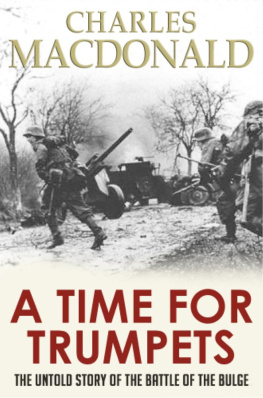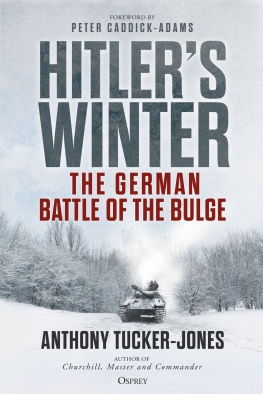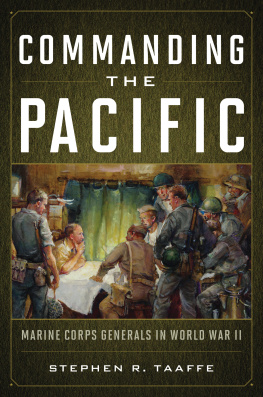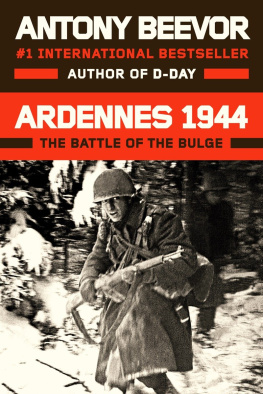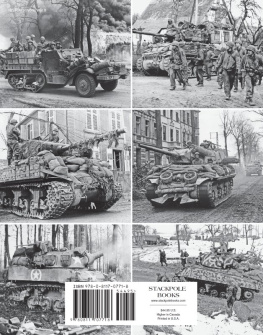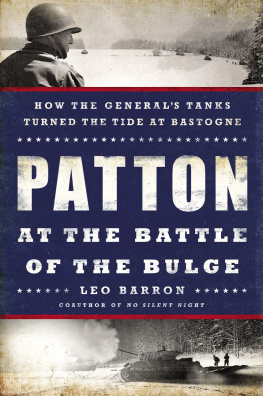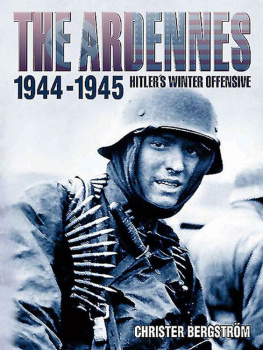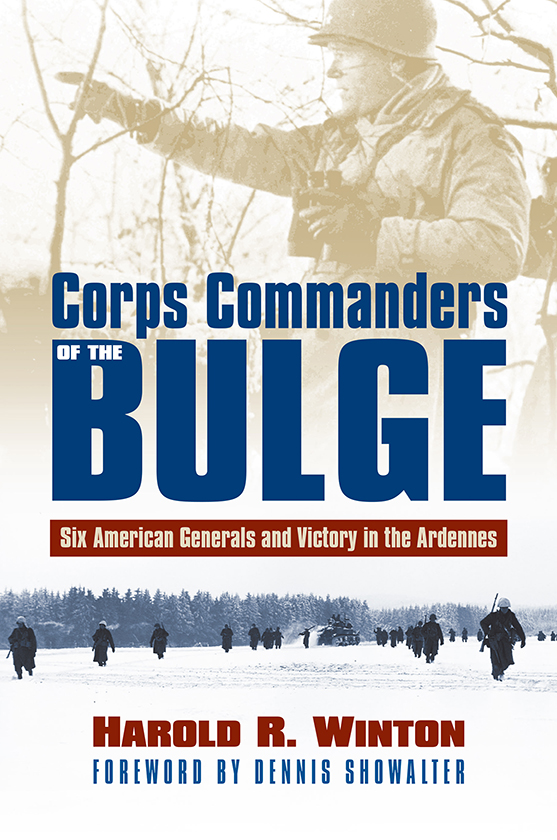Harold R. Winton - Corps Commanders of the Bulge: Six American Generals and Victory in the Ardennes
Here you can read online Harold R. Winton - Corps Commanders of the Bulge: Six American Generals and Victory in the Ardennes full text of the book (entire story) in english for free. Download pdf and epub, get meaning, cover and reviews about this ebook. City: Lawrence, year: 2007, publisher: University Press of Kansas, genre: History. Description of the work, (preface) as well as reviews are available. Best literature library LitArk.com created for fans of good reading and offers a wide selection of genres:
Romance novel
Science fiction
Adventure
Detective
Science
History
Home and family
Prose
Art
Politics
Computer
Non-fiction
Religion
Business
Children
Humor
Choose a favorite category and find really read worthwhile books. Enjoy immersion in the world of imagination, feel the emotions of the characters or learn something new for yourself, make an fascinating discovery.

- Book:Corps Commanders of the Bulge: Six American Generals and Victory in the Ardennes
- Author:
- Publisher:University Press of Kansas
- Genre:
- Year:2007
- City:Lawrence
- Rating:3 / 5
- Favourites:Add to favourites
- Your mark:
Corps Commanders of the Bulge: Six American Generals and Victory in the Ardennes: summary, description and annotation
We offer to read an annotation, description, summary or preface (depends on what the author of the book "Corps Commanders of the Bulge: Six American Generals and Victory in the Ardennes" wrote himself). If you haven't found the necessary information about the book — write in the comments, we will try to find it.
Wintons is the first study of the Bulge to examine leadership at the largely neglected level of corps command. Focusing on the decisions and actions of six Army corps commandersLeonard Gerow, Troy Middleton, Matthew Ridgway, John Millikin, Manton Eddy, and J. Lawton Collinshe recreates their role in this epic struggle through a mosaic of narratives that take the commanders from the pre-war training grounds of America to the crucible of war in the icy-cold killing fields of Belgium and Luxembourg.
Winton introduces the story of each phase of the Bulge with a theater-level overview of the major decisions and events that shaped the corps battles and, for the first time, fully integrates the crucial role of airpower into our understanding of how events unfolded on the ground. Unlike most accounts of the Ardennes that chronicle only the periods of German and American initiative, Wintons study describes an intervening middle phase in which the initiative was fiercely contested by both sides and the outcome uncertain. His inclusion of the principal American and German commanders adds yet another valuable layer to this rich tapestry of narrative and analysis.
Ultimately, Winton argues that the flexibility of the corps structure and the competence of the men who commanded the six American corps that fought in the Bulge contributed significantly to the ultimate victory. Chronicling the human drama of commanding large numbers of soldiers in battle, he has produced an artful blend of combat narrative, collective biography, and institutional history that contributes significantly to the broader understanding of World War II as a whole. With the recent modularization of the U.S. Army division, which makes this command echelon a re-creation of the corps of World War II, Corps Commanders of the Bulge also has distinct relevance to current issues of Army transformation.
Harold R. Winton: author's other books
Who wrote Corps Commanders of the Bulge: Six American Generals and Victory in the Ardennes? Find out the surname, the name of the author of the book and a list of all author's works by series.

